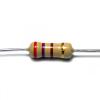Does anyone know which has more catechin -> fermented or unfermented
When cacao beans were roasted to 120 °C, the catechin level in beans increased by 696% in unfermented beans, by 650% in Ivory Coast beans, and by 640% in Papua New Guinea fermented beans compared to the same unroasted beans.
"Substantial decreases (>80%) in catechin and epicatechin levels were observed in fermented versus unfermented beans."
"The levels of epicatechin and catechin were determined in raw and conventionally fermented cacao beans and during conventional processing, which included drying, roasting, and Dutch (alkali) processing. Unripe cacao beans had 29% higher levels of epicatechin and the same level of catechin compared to fully ripe beans. Drying had minimal effect on the epicatechin and catechin levels.
Substantial decreases (>80%) in catechin and epicatechin levels were observed in fermented versus unfermented beans. When both Ivory Coast and Papua New Guinea beans were subjected to roasting under controlled conditions, there was a distinct loss of epicatechin when bean temperatures exceeded 70 °C.
When cacao beans were roasted to 120 °C, the catechin level in beans increased by 696% in unfermented beans, by 650% in Ivory Coast beans, and by 640% in Papua New Guinea fermented beans compared to the same unroasted beans. These results suggest that roasting in excess of 70 °C generates significant amounts of (−)-catechin, probably due to epimerization of (−)-epicatechin. Compared to natural cocoa powders, Dutch processing caused a loss in both epicatechin (up to 98%) and catechin (up to 80%). "
























































